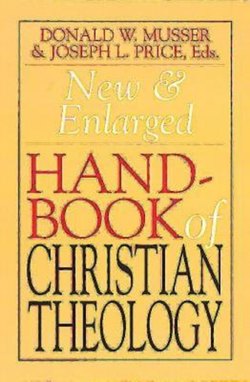Читать книгу New & Enlarged Handbook of Christian Theology - Donald W. Musser - Страница 36
На сайте Литреса книга снята с продажи.
ОглавлениеCELAM II
In 1968 the second general ConferencE of Latin AMerican Bishops (CELAM II) met in Medellín, Colombia; the first conference had been held in Rio de Janeiro in 1955. Although the title of the conference, “The Church in the Present-Day Transformation of Latin America in the Light of the Council,” implied that the bishops were applying Vatican II to the particular circumstances of their continent, “Medellin,” as the meeting and its final document were generally called, became an important reference point for pastoral work and theology during the next two decades, and it was arguably the moment when Latin American Catholicism moved from being an extension of a European church and took on its own identity.
Methodologically, Medellin reversed the traditional doctrine-to-application model of Roman Catholic theology by first focusing on the reality of the social, economic, and political situation of Latin American society before proceeding to theological reflection and pastoral commitment. This new approach is evident in each of the sixteen final documents and in the presentation of the conclusions as a whole. First, the documents deal with the current situation, focusing on peace, justice, education, and family; a second set of documents takes up various aspects of pastoral work, such as catechetics and liturgy; and the last set deals with the structures of the church (e.g., priests, religious life, and laity), operating on the assumption that these should function to serve the church’s mission within the current situation. In their pastoral reflection and planning, church workers were quick to invoke the “Medellin method,” following a similar procedure in order to set their pastoral activity within an overall economic, political, and social framework.
The bishops several times used the language of liberation. God’s action in salvation history, for example, is one of “integral liberation.” Human development is viewed as a kind of exodus, in which there is a continuity between human efforts to create more humane living conditions in a material sense, through the building of communities, and ultimate union in God. The church is called to be committed boldly to the “liberation of every human being and all human beings.”
Medellin’s denunciation of “institutionalized violence” and “structures of sin” was frequently cited thereafter. With regard to approaches to development, the bishops questioned “conservative” and “developmentalist” mind-sets, and they spoke positively of a “revolutionary” framework, which they identified not with violence but with an emphasis on structural change and a conviction that people should be “agents of their own development,” rather than objects of planning by technocrats. In their call for liberating education not only in schools but also in the church’s own education work, the bishops implicitly endorsed the ideas of Paulo Freire, author of Pedagogy of the Oppressed, and indeed several times they spoke of “consciousness-raising” as part of pastoral work. They also urged the formation of Christian base communities and provided both a theological and a sociological rationale for such a pastoral strategy. An important theme was poverty: the stark reality of the living conditions of most Latin Americans, the gospel ideal of poverty, and voluntary poverty as a symbol of solidarity with the poor. Although several Protestant observers were present at Medellin, ecumenical issues were a relatively small concern in the 1960s when Latin America was still regarded as Catholic.
The Medellin conference reflected the turbulence of the 1960s. Latin American social scientists were developing the consequences of “dependency theory” not only in economics but also in other spheres. Vatican II had unleashed a great deal of questioning among priests, sisters, and active laypeople, and numerous groups issued manifestos questioning inherited pastoral practices and theology. Not accidentally, Peruvian theologian Gustavo Gutiérrez provided the first sketch of a Latin American theology of liberation in a talk to clergy about a month before Medellin.
The 130 bishops assembled at Medellin representing the Latin American episcopacy were aided by about 100 advisors, including Gutiérrez, who may have seen more than the bishops themselves saw as the implications of the texts. For a brief period the various pastoral institutes run by CELAM in Colombia and elsewhere were centers for the diffusion of the new liberation theology. By the early 1970s, however, a backlash set in as conservatives under Colombian Archbishop Alfonso Lopez Trujillo took over the CELAM administration. CELAM III, held at Puebla, Mexico, in 1979, was far more tightly controlled, and although it did not reverse Medellin, its conclusions were more of an admixture of many elements. Under Pope John Paul II (1978–), the Vatican itself vigorously endorsed the more conservative approach represented by Lopez.
PHILIP BERRYMAN
Bibliography
Edward L. Cleary, Crisis and Change: The Church in Latin America Today.
Second General Conference of Latin American Bishops, The Church in the Present-Day Transformation of Latin America in the Light of the Council; vol. 1, Position Papers, vol. 2, Conclusions.
Cross-Reference: Communities, Institutionalized Violence, Liberation Theology–Latin American, Mujerista Theology, Poverty, Praxis, Sin, Vatican II.
